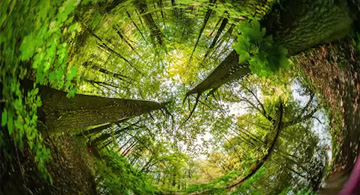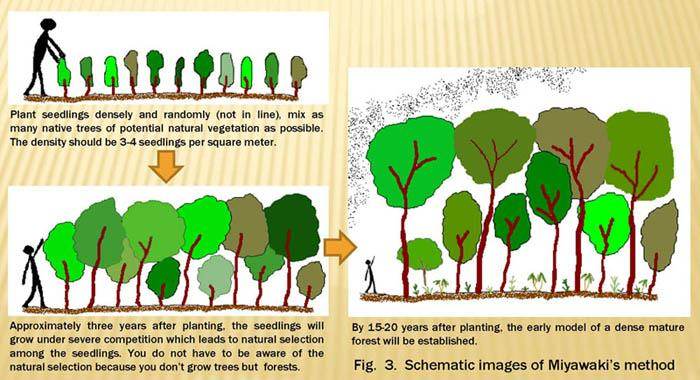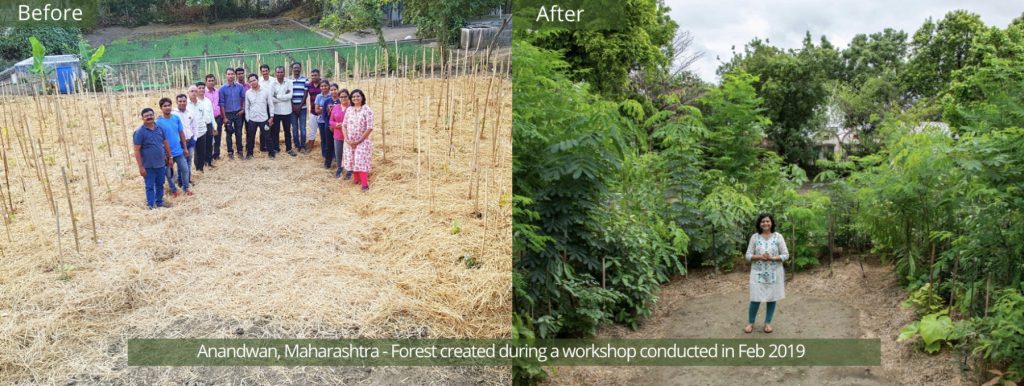With all the flak incoming on a daily basis, the best way to survive is find a quiet corner in which to sit (preferably in a Hartley Botanic glasshouse) and draw deep, calming breaths…or sip a bracing adult beverage…or both. Either helps to level the course and keep one’s inner compass pointing true to hopes and plans for a brighter future. And as one who is bent on improving the world one garden at a time, I take heart from the trends for mini-forests and urban woodlands being planted around the world.

Plant flowers for yourself, but plant trees for your grandchildren, as the old saying goes. And while some countries, like Ireland, pledge to plant a million trees in the fight against climate change, these trees tend to be economic monocrops. You and I however can make what may well prove to be a bigger impact on the future by turning our gardens or joining others to shape vacant lots into small forests. Starting from seedlings of trees native to your region, placed randomly as they would be if self-sown, watered and nurtured gently, in 10 years it is possible to have a respectable leafy glade in which to ‘forest bathe,’ Japanese-style, in your own backyard.
Perhaps it’s because so much of Japan is over-developed, the people reverentially cling so passionately – and innovation — to green space and vestiges of nature as she was. Botanist and arborist Akira Miyawaki noticed vestige woodlands growing near the hallowed ground of temples and cemeteries, and from these observations developed a technique that is simple enough for even a learner-forester to employ. The schematic below demonstrates the growth cycle. It depends on the natural tendency of a mixed grove of trees to encourage the growth of their fellows. It really does take a village in this sense: the seedlings are planted closely and as they gain height, the shorter stature plants succumb to the taller, effectively thinning out the understory until one is left with a self-spaced mature woodland.

I’ve had six gardens in five climate zones. So, like many Americans, we’ve moved frequently and, sadly, none of my gardens have outlasted me. So planting a mini forest in a suburban backyard may not be entirely practical unless you know you are going to stay put; how many of us do, these days? Working as a community makes more sense, engaging with city or HOAs to identify space, and taking care to comply with all the necessary ground rules can make a forest grow into a neighborhood asset. This is how Shubhendu Sharma approached introducing Miyawaki forests in India, beginning in 2011. Based in Bangalore and New Delhi, he and his team at Afforestt – taken from the term ‘afforestation’ – have had stunning results creating small woodlands at locations from small farms, university grounds to tiger preserves.

As he explains in a TED talk about the method he employs, it begins, like all good gardening practice with understanding and improving the soil, from there the work continues in the same vein. Some environmentalists are negative about this type of afforestation, reasoning that it cannot possibly replace a naturally grown woodland, but then, that is not the purpose. A natural forest evolves over centuries; Miyawaki groves are public or private amenities that can benefit local flora and fauna in decades. They’re not there to replace or justify the elimination of natural forests, they are, like gardens, an enhancement to the landscape.
My Colorado garden is now pushing 5 years old…early days! I’ve just added two Rhus typhina lanceolata (cutleaf sumac) to a small grove of Forestiera neomexicana (desert olive), a green gage plum, several elderberry bushes, cherry and peach trees that have been here at least 10 years and supported by an array of native understory shrubs…all on my quarter-acre, city-corner lot. Opportunities for forest-bathing may be a little ways off, but I can dream, can’t I?

©Ethne Clarke, 2020
Useful links to follow up this story:
https://www.afforestt.com/about
https://blog.ted.com/shubhendrasharma
https://daily.jstor.org/the-miyawaki-method-a-better-way-to-build-forests/


